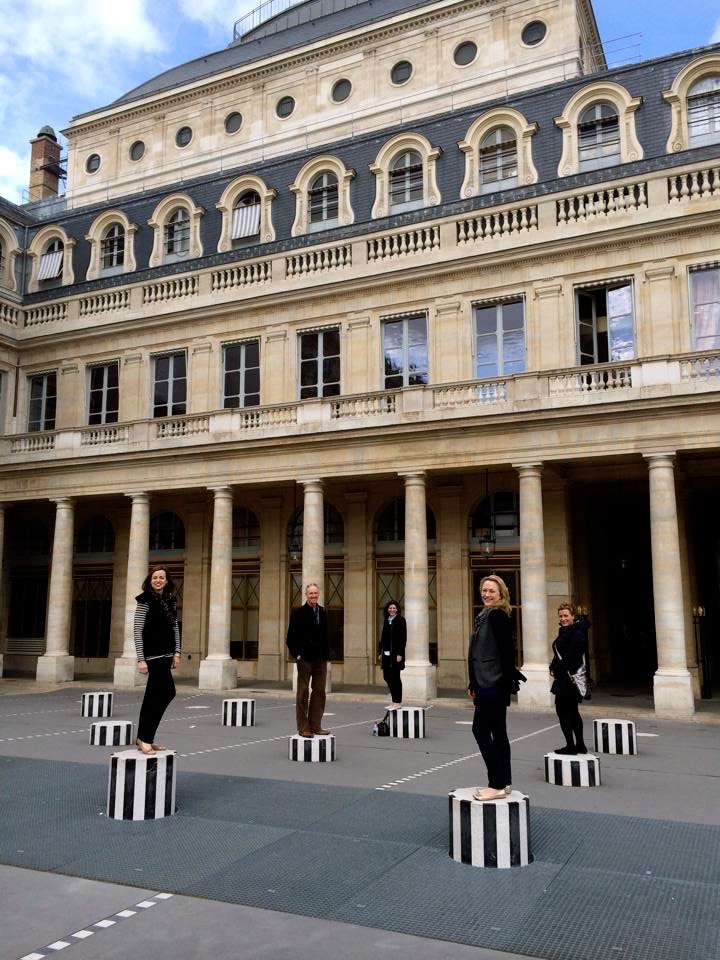 THE DESIGN STUDY GROUP GANG IN THE COURTYARD OF THE PALAIS ROYAL. THE BLACK AND WHITE STRIPED COLUMN BASES ARE PART OF THE 1986 ART INSTALLATION KNOWN AS THE “COLUMNS OF BUREN” CREATED BY THE FRENCH ARTIST DANIEL BUREN. PHOTOGRAPH: JOHN TSCHIRCH
THE DESIGN STUDY GROUP GANG IN THE COURTYARD OF THE PALAIS ROYAL. THE BLACK AND WHITE STRIPED COLUMN BASES ARE PART OF THE 1986 ART INSTALLATION KNOWN AS THE “COLUMNS OF BUREN” CREATED BY THE FRENCH ARTIST DANIEL BUREN. PHOTOGRAPH: JOHN TSCHIRCH
The colonnades and gardens of the Palais Royal have been home to a cardinal, a queen, princes, princesses, dukes, duchesses and assorted restauranteurs, revolutionaries, actors, musicians, prostitutes and card sharks. It seems as if all of France has paraded through the elegant courtyards and galleries of this complex of classical buildings in the heart of Paris. The vibrant and colorful history of the nation is embedded in the walls of this most noble and notorious setting.
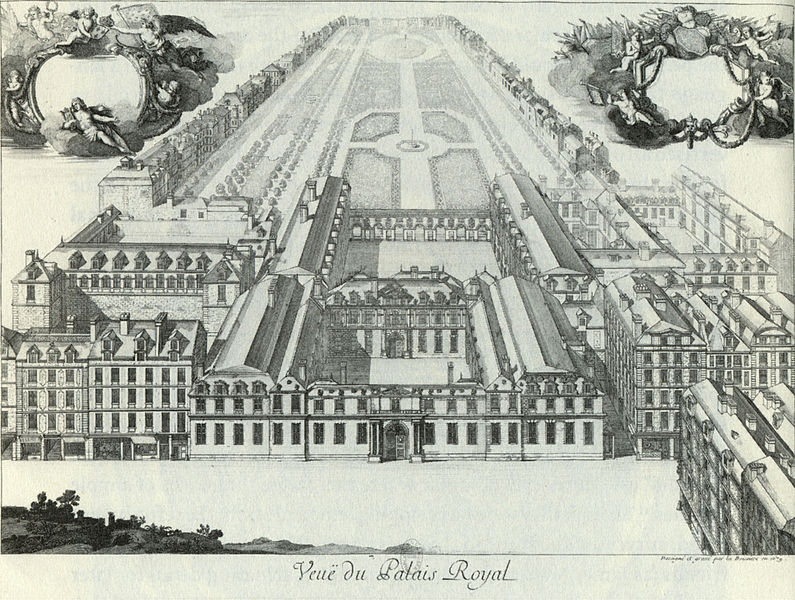 VIEW OF THE PALAIS ROYALE, 1679. PHOTO COURTESY OF WIKIPEDIA. P-D.
VIEW OF THE PALAIS ROYALE, 1679. PHOTO COURTESY OF WIKIPEDIA. P-D.
Cardinal Mazarin, the all powerful minister of state for King Louis XIII, commissioned architect Jacques Lemercier to design and build his palace in the mid 1620s. Opposite the Louvre, the Palais Cardinal became the epicenter of political power. Upon the death of Richelieu in 1642, the palace was left to the King. In 1643, this most elegant of buildings became home to Louis XIII’s widow, Anne of Austria, the boy-King Louis XIV and his brother, and the chief minister, and supposed lover of the Queen, Cardinal Mazarin. Renamed the “Palais Royal,” it served as a regal residence until inherited by the Duc d’Orleans.
During the French Revolution, Philippe d’Orleans took the name “Philippe d’Egalite” (Philip the Equal) and opened the gardens to the public and hired the architect Victor Louis to design elegant galleries around the grounds to house shops. Although he supported the revolutionaries, he was still guillotined in the end. His son, Louis Philippe, became King of the French in 1830.
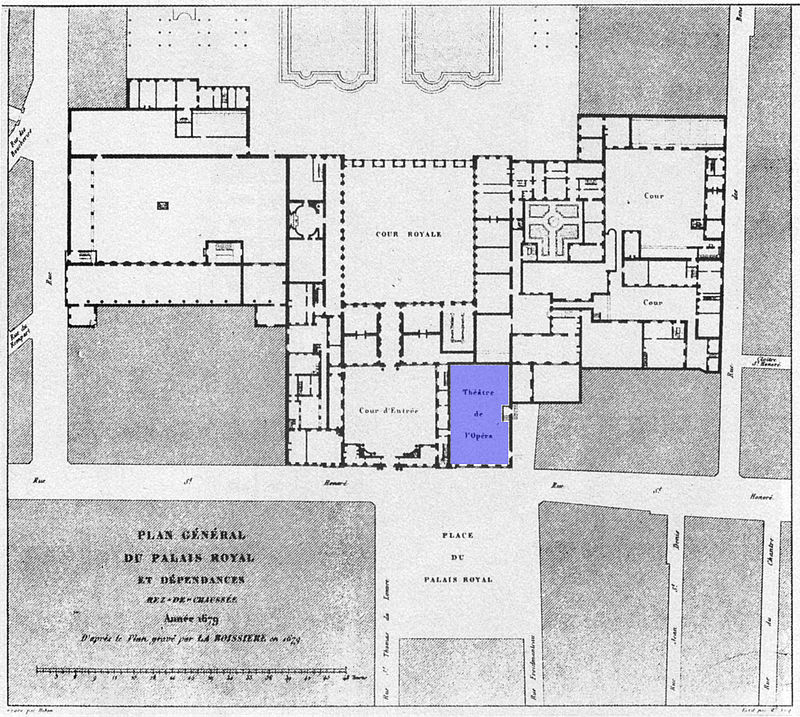 PLAN OF THE PALAIS ROYAL, 1679. PHOTO COURTESY OF WIKIPEDIA. P-D.
PLAN OF THE PALAIS ROYAL, 1679. PHOTO COURTESY OF WIKIPEDIA. P-D.
The complex is entered by the main portal on the rue Saint-Honore. The entrance court leads through a passage into the Court of Honor. To the right, colored in blue, was the first theater in the palace. The scene of some of the greatest French theatrical and musical talent, the theater was used in the 1660s by Moliere’s troupe of actors and in the 1670s by the brilliant musician, Jean Baptiste Lully for performances of the Royal Academy of Music.
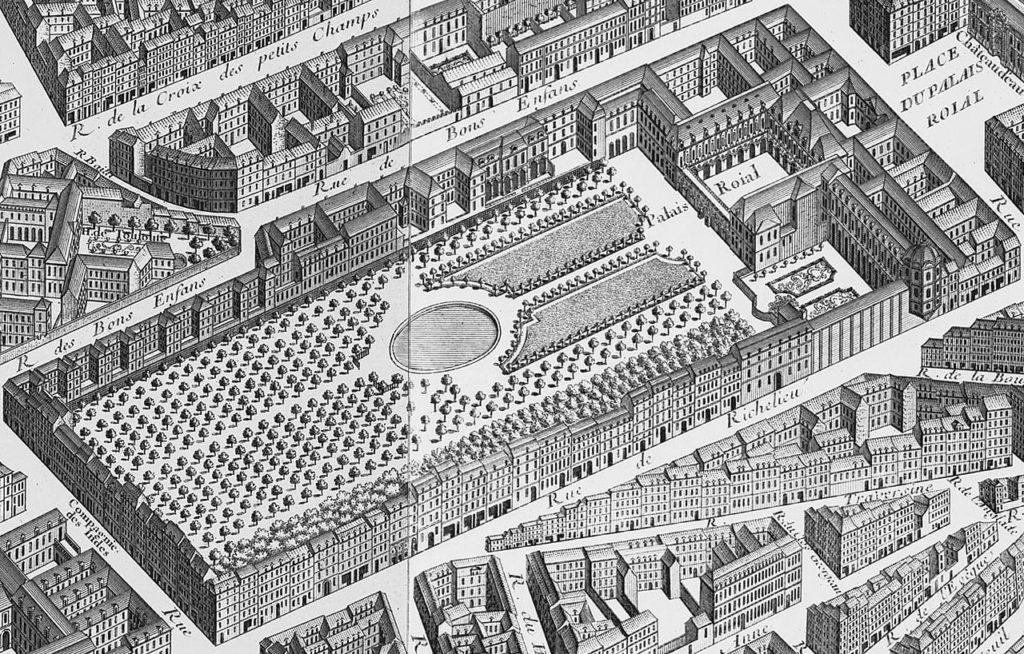 PALAIS ROYAL. TURGOT MAP, 1739. PHOTOGRAPH COURTESY OF WIKIPEDIA. P-D.
PALAIS ROYAL. TURGOT MAP, 1739. PHOTOGRAPH COURTESY OF WIKIPEDIA. P-D.
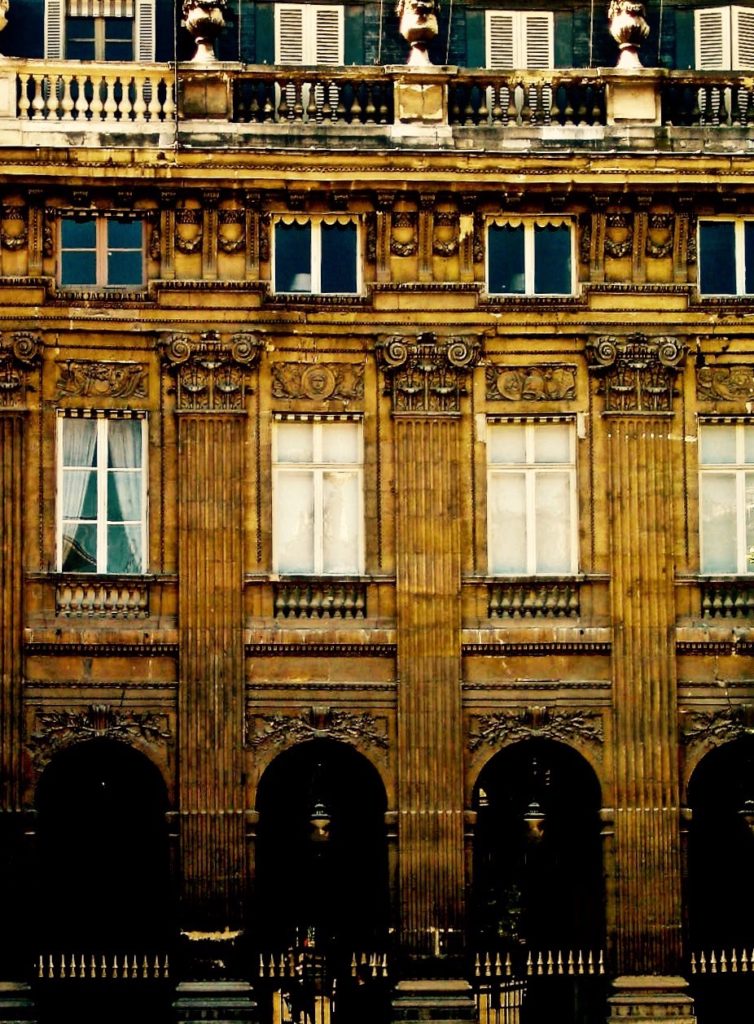 THE ARCADES OF THE PALAIS ROYAL IN GOLDEN TWILIGHT. PHOTOGRAPH: JOHN TSCHIRCH
THE ARCADES OF THE PALAIS ROYAL IN GOLDEN TWILIGHT. PHOTOGRAPH: JOHN TSCHIRCH
The arcade is lined with superbly carved half columns (or pilasters). The precision and harmony of this architectural ensemble is typical of the restraint and order of French Neoclassicism. Shops and restaurants line the arcades while the upper levels contain apartments. Among the more famous residents of the apartments was the Nobel prize winning writer, Colette, author of the novella, Gigi.
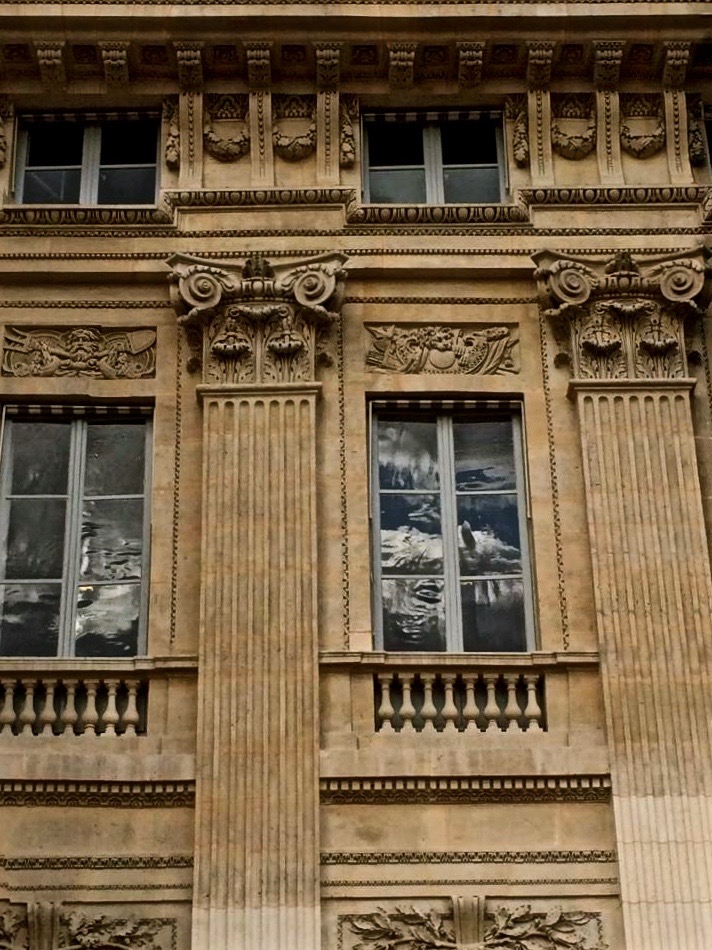 ARCHITECTURAL DETAIL. PHOTOGRAPH: JOHN TSCHIRCH
ARCHITECTURAL DETAIL. PHOTOGRAPH: JOHN TSCHIRCH
Detail of the composite order of Ionic scrolled column capitals resting on acanthus leaves. Above each window are trophy motifs comprised of ancient Roman weapons and armor.
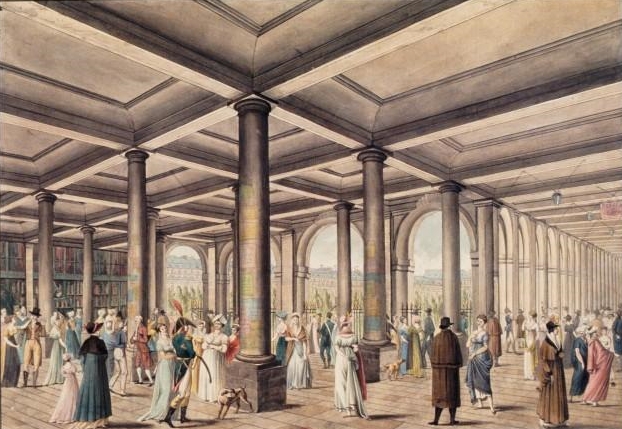 PROSTITUTES AND THEIR CLIENTS IN THE GALLERIES MONTPENSIER AND BEAUJOLAIS AT THE PALAIS ROYAL, 1800. PHOTOGRAPH COURTESY OF WIKIPEDIA. P-D.
PROSTITUTES AND THEIR CLIENTS IN THE GALLERIES MONTPENSIER AND BEAUJOLAIS AT THE PALAIS ROYAL, 1800. PHOTOGRAPH COURTESY OF WIKIPEDIA. P-D.
The galleries of the Palais Royal were a gathering place for fashionable and not so fashionable Parisian society throughout the 17th, 18th and 19th centuries. Once a private noble house, the extensive grounds of the palace were developed by the Orleans family in the late 1700s as galleries for shops and a public garden. Mobs ransacked the palace during the Revolution of 1848. In the 1850s, Prince Napoleon, the cousin of Napoleon, took up residence. Today, the palace houses the Council of State, the Ministry of Culture, the Constitutional Council and part of the National Library of France. One can also still dine at the Grand Vefour, one of the oldest restaurants in Paris.
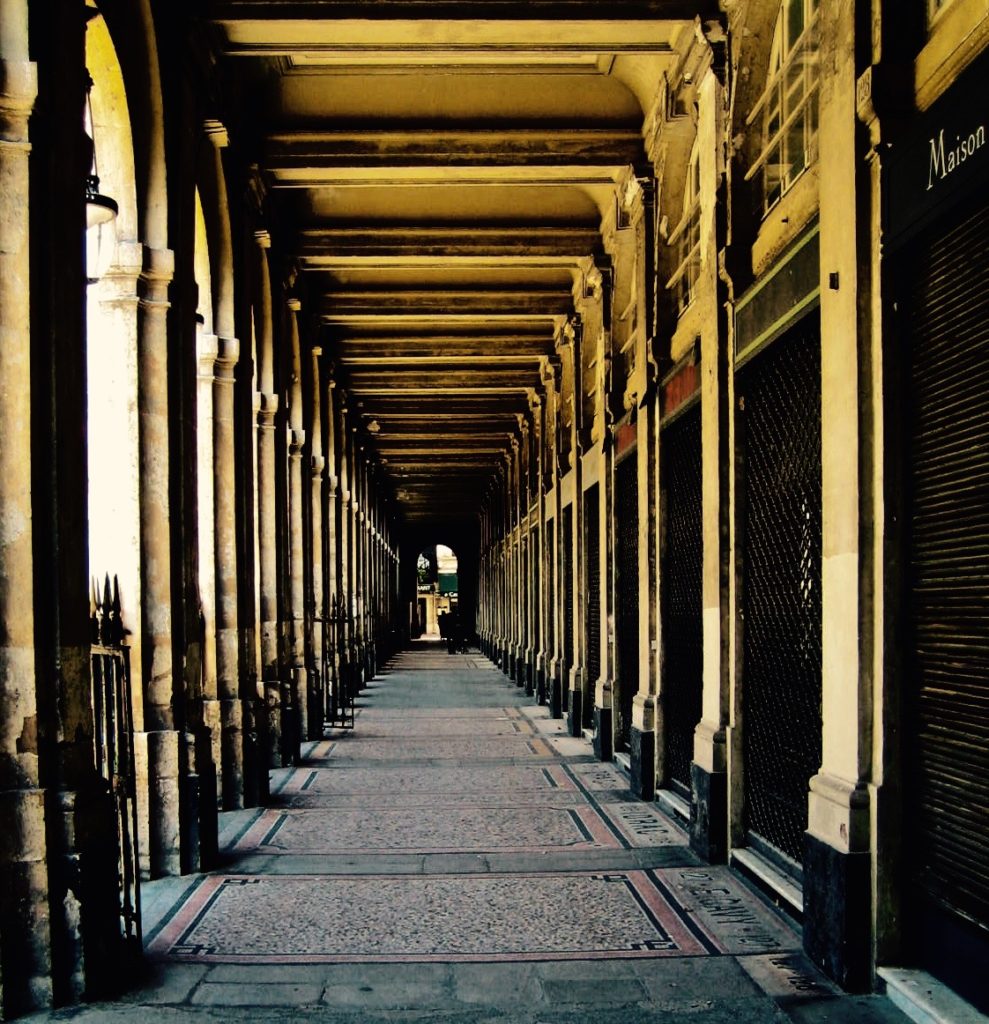 VIEW DOWN ONE OF THE GALLERIES. PHOTOGRAPH: JOHN TSCHIRCH
VIEW DOWN ONE OF THE GALLERIES. PHOTOGRAPH: JOHN TSCHIRCH
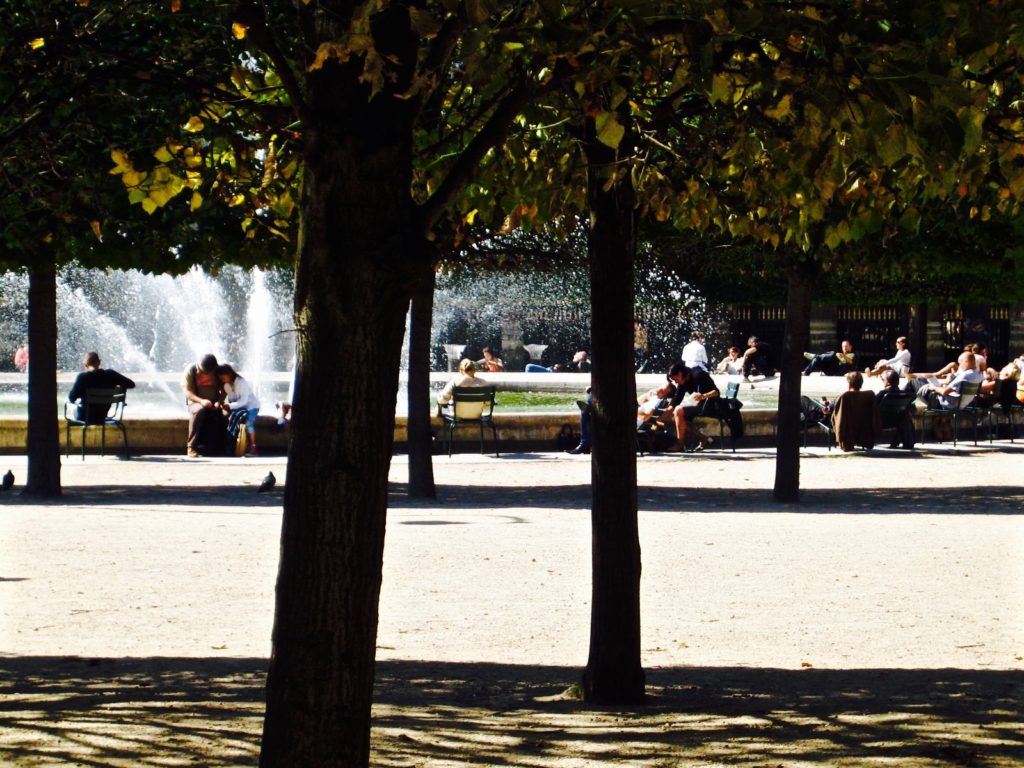 GARDEN OF THE PALAIS ROYAL. PHOTOGRAPH: JOHN TSCHIRCH
GARDEN OF THE PALAIS ROYAL. PHOTOGRAPH: JOHN TSCHIRCH
